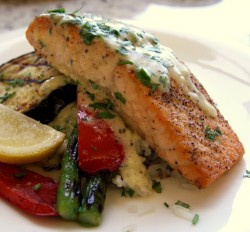When you think zinc I want you to think of zinc deficiency that has been estimated to cause more than 450,000 deaths in children under the age of five annually. Of course this is a bit of a rubbery figure estimated based on zinc availability in the diet and childhood stunting rates in Latin America, Africa and Asia where zinc deficiency is widespread. But even half of that should be serious enough to raise your concerns.
It is actually currently recognised that milder zinc deficiency contributes to a number of health problems, especially common in children who live in developing countries. An estimated two billion people worldwide are affected by dietary zinc deficiency. Controlled trials of moderate zinc supplementation have demonstrated that marginal zinc deficiency contributes to impaired physical and mental development and increased susceptibility to life-threatening infections in young children.
So what is so important with zinc?
As it happens, zinc is required for the catalytic activity of almost 100 enzymes, not bad even for an essential mineral. This way zinc is involved in numerous aspects of cell metabolism. It plays a role in immune function, protein synthesis, wound healing, DNA synthesis, and cell division. Zinc also supports normal growth and development during pregnancy, childhood, and adolescence and is required for proper sense of taste and smell.
Consequently, human zinc deficiency symptoms include retarded growth, depressed immune function, skin lesions, skeletal abnormalities, impaired reproductive ability and behavioural abnormalities such as changes in mood, loss of affect and emotional lability, anorexia, dysfunction of smell and taste, irritability and depression.
Sounds quite serious, but do you need to worry?

Zinc (green here) is an essential part of many enzymes (Illustration: Wikimedia)
Probably not for the general population the European Food Safety Authority said, but be aware that a daily intake of zinc is required to maintain a steady state because the body has no specialised zinc storage system. And American experts claim that about 40% of elderly Americans have diets that are deficient in this important, but often underappreciated micronutrient. Makes you wonder what the difference is between Americans and Europeans, they can’t both be right.
The good thing is that zinc is naturally present in a variety of foods and added to others. Although oysters contain more zinc per serving than any other food, red meat and poultry provide the majority of zinc in the Western diet. Other good food sources include beans, nuts, certain types of seafood (such as crab and lobster), whole grains, fortified breakfast cereals, and dairy products.
But there is a catch. Phytates, which are present in whole-grain breads, cereals, legumes, and other foods that are all supposed to be healthy, bind zinc and inhibit its absorption. Thus, the bioavailability of zinc from grains and plant foods is lower than that from animal foods, although many grain- and plant-based foods are still good sources of zinc.
That is in the developed world
The situation is completely different in the developing world as we indicated above. Zinc deficiency is common in Southeast Asia, sub-Saharan Africa, and parts of Latin America. It affects more than 1 in 6 people worldwide and contributes to an estimated 1 in 58 deaths in children younger than 5 years. And it is all because of the crops that constitute the major part of the diet in the developing world.
Almost half of the world’s cereal crops are deficient in zinc. Many agricultural countries around the world are affected by zinc deficiencies. In China, around half of the agricultural soils are zinc deficient, affecting mainly rice and maize. Similarly in India and Turkey, zinc-deficient soils occupy almost 50% of the agricultural area and impact wheat yield.
Zinc containing fertilisers the solution
Where zinc deficiency is a limiting factor, zinc supplements can increase crop yields. Balanced crop nutrition supplying all essential nutrients, including zinc, is a cost effective management strategy. Even with zinc-efficient varieties, zinc fertilisers are needed when the available zinc in the topsoil becomes depleted. Zinc sulphate is easily added to agricultural soil and taken up by most crops, which benefit from the zinc.
Adding zinc to fertilisers provide a double whammy. Cadmium and zinc are similar in their function in the human body. Cadmium may actually displace zinc in some of its important enzymatic and organ functions interfering with these functions or preventing them from being completed. The zinc:cadmium ratio is very important, as cadmium toxicity and storage are greatly increased with zinc deficiency, and good levels of zinc protect against tissue damage by cadmium. The refinement of grains reduces the zinc:cadmium ratio, so zinc deficiency and cadmium toxicity are more likely when the diet is high in refined grains and flours.
So, what should you do?
The best way to get zinc is through food. Red meat, like beef and lamb, and seafood are good sources of zinc. However, since such sources are not affordable in many parts of the world, the global solution is to start to incorporate zinc in fertilisers used for growing crops in zinc deficient soils. But the question is how to get farmers to pay for this. It might pay off to also make sure that the diet contains enough selenium. It’s responsible for regulating the delivery of zinc to zinc enzymes throughout the body for proper zinc metabolism. Seafood, eggs and Brazil nuts are particularly good sources of selenium.
If you’re into vigorous exercise you should be aware that excessive sweating depletes zinc. You may need to account for sweating by eating more zinc.
I am not normally a proponent of food supplements. However, in countries where zinc deficiency is common, supplements may help to reduce child deaths and related diseases in the short-term. And maybe for certain age groups also in other countries. But remember that supplements are not a substitute for a well-balanced diet and the more the better doesn’t apply. Zinc toxicity can occur in both acute and chronic forms if consuming too much of a zinc supplement. Acute adverse effects of high zinc intake include nausea, vomiting, loss of appetite, abdominal cramps, diarrhea, and headaches. So caution is recommended.
The issue might become worse in the future
And just to sharpen your mind, be aware that rising carbon dioxide emissions are set to make the world’s staple food crops less nutritious, according to new scientific research, worsening the serious ill health already suffered by billions of malnourished people. Field trials of wheat, rice, maize and soybeans show that higher carbon dioxide levels significantly reduce the levels of the essential nutrients iron and zinc, as well as cutting protein levels.
Related articles

 Recently new warnings were issued by the Finnish National Institute for Health and Welfare to women to avoid consuming large amounts of liquorice during pregnancy as it can have long-term harmful effects on the development of the foetus. A new Finnish study had shown that youths previously exposed to large amounts of liquorice in the womb performed less well than others in cognitive reasoning tests carried out by a psychologist. The difference was equivalent to approximately seven IQ points.
Recently new warnings were issued by the Finnish National Institute for Health and Welfare to women to avoid consuming large amounts of liquorice during pregnancy as it can have long-term harmful effects on the development of the foetus. A new Finnish study had shown that youths previously exposed to large amounts of liquorice in the womb performed less well than others in cognitive reasoning tests carried out by a psychologist. The difference was equivalent to approximately seven IQ points.



































































